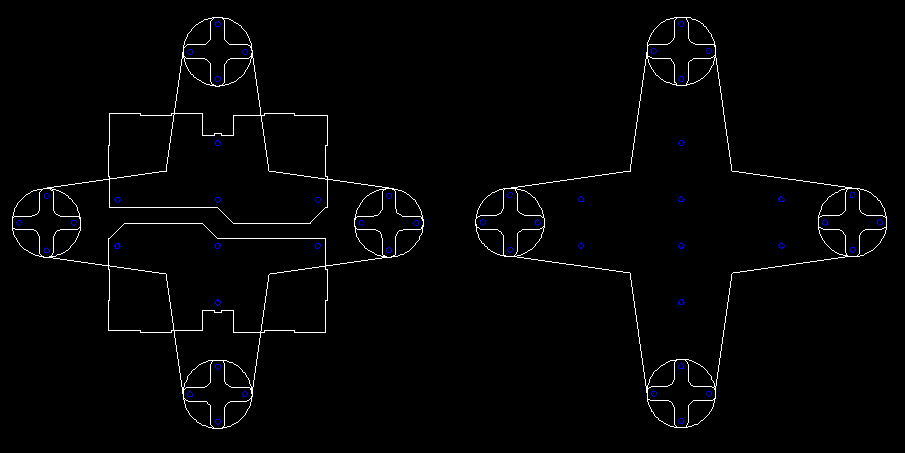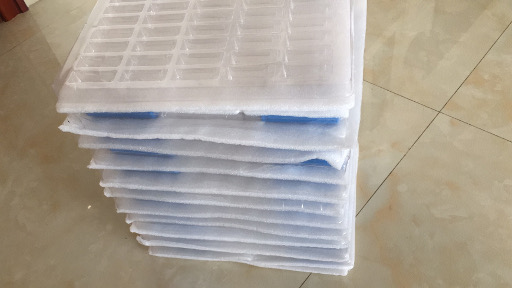|
Home Page
Six Transistor Cache
Investors
Launch Date
Contacts
Terms and Conditions
_________________________
|
Parametric Drone Delivery Technology
We are making parametric drone construction software for drone delivery systems
Python Parametric Opens Source Design Software
- We already design Hypercubes with parametric software. The justification for parametric software is that when dimensions change, all the percolating effects of the change are handled by scripts so that there is no human intervention to add mistakes. Because of the automation, Hypercube PCBs always assemble into Hypercube first time. Thus we are going to extend the method to producing parametric drones and open source it.
- The Python software for parametric drones will read a plain text file that describes which drone model to make.
- Then the Python script searches the configuration file in plain text format for that drone model and the variant. There are blocks of format information one for each variant.
- The variants come in different sizes, number of motors, size of rotors, thickness of the construction materials, and anything else specific to that model such as cargo bay size
- Then there are more detailed information about that model coded into the Python.
- Typically, the Python code adds the hole positions for motors, addresses strength issues, vibration issues, weight, battery requirement, range requirements and so on and tries to accommodate all that into the final drone design.
- The final drone design stage is to generates DXF files for cutting with lasers or routers. Typically the drones are going to be made from carbon fiber panels which are routed, or beech plywood which are cut by laser or canvas which can be cut by hand or by laser. Thin titanium sheets and aluminum can also be cut by the fiber lasers that we sell. Many other composites also possible such as carbotanium (carbon fiber titanium mesh composite) which is resistant to crash damage compared to all other materials.
- Typically the DXF file will come out like this:

- The scripts will also allow the addition of Hypercubes PCB and electronics in Hypercube format to the drone by creating mount holes.
- Typically the boards can be the Lithium battery modules, the H-bridges, third party sensors mounted on to prototyping boards and CPU boards to manage each sub-system.
- The scripts can also allow the addition of more exotic items such as solar panels, Lidar, microwave radar, cameras, antenna, actuators to latch or release cargo and so on as the software gets expanded.
- The final design is set up in such a way that everything can be joined by rivets, friction joints, glue, plastic welding solvent and so on. Nylon screws with flanged nuts are very strong and light weight and most of all cheap. So we encourage use of these kinds of items to rapidly assemble drones. There is little point in designing parametric drone that then requires welding and machining operations out of solid aluminum lets say because it would be so expensive to make the final product. What we want is easy to cut from flat sheets a parametric product that is easy to assemble without the overheads of complex aircraft assembly techniques and its associated costs.
- After generating the DXF files, the software then auto generates 3D rendering scripts for the design.
- This is typically OpenSCAD scripts that are easy enough to load and view the final model of the design in 3D.
- The models are just representations to check what the final product will look like.
- Essentially it is there to know how close the rotors are to each other, whether design is OK to manufacture and so on.
- If there are no geometric errors in the DXF files, then OpenSCAD files can be read by FreeCAD which can export the 3D objects as STEP files. These can be used to compare with other step files for 100% accurate geometry checks for parts produced through other 3D construction software.
Drone Navigation Software
- A 9 axis sensor such as MPU9250 has a magnetometer (to judge absolute orientation), accelerometer to judge horizontal level + linear acceleration, and gyro (to estimate spin)
- A GPS module takes in information about drone's absolute location to within a few meters which is usually good enough in the countryside and villages.
- We will still need collision avoidance sensors and software to avoid hitting power lines, telecom poll wires, trees, birds, insects, tall grass, and so on.
- Most likely a LIDAR will also help - but they too are not perfect for small objects such as telecom wires.
- So a range of sensors need to be operating and Hypercubes are perfect for this kind of expansive R&D because each Hypercube can take 12 boards and we can add or remove boards as needed on the fly and the multi-tasking the software that comes with it. (The final design could be a custom board, but to save weight, it would most likely be a custom board.)
- The software also has auto pilot features (not to be confused with aviation auto pilot) which means it can be injected with software errors and then monitored to see how it will recover.
- This is far more advanced than any kind of software out there particularly for drones.
- Typically what we are also looking to do with auto pilot software is discover all the recovery algorithms after incurring damage.
- So if a net was thrown on to a propeller, the system must recover in real time and avoid crashing to earth. Ideally, it would need to reverse the netted propeller, fly upside down to throw the net off, and the flip back up, and start the stalled propeller. We would use something like the printf computer to do the debugging work.
QR Code Lander
- It is possible to add a Linux computer which we are working on to add higher functions. (Power consumption about 5W.)
- We already have Linux software that can read camera and if it sees a QR code, it can then inform the landing system to land on the QR code.
- This is ideal for the customer to print and place different QR codes on top of a roof and get his personal delivery to the relevant QR coded pad - which is very cheap to implement for city dwellers.
- There can be multiple robot boxes, so the drone only lands on the correct QR code matching robotic box and release the delivery into that specific robot box autonomously.
- More complex systems such as shimmering lights, IR beams, lasers and radio could be used in cities to add to the different lander technologies. No one system is perfect, so a multitude of methods is recommended that can cross check against each other to improve delivery robustness.
Drone Delivery Mail Boxes With Built In Charger
- The delivery drones can nearly double the range if they can land on the mail box and be recharged by the mail box to return the drone.
- The mail box can have simple motorized flaps to open to allow the drone into the box, where it can deposit the mail or parcel and be one its way.
- But before it goes, it can get recharged.
- The box can also be solar powered to allow remote delivery.
- The flaps on the mail box also protect the cargo from being damaged by rain and snow.
Long flight duration drones and electric aircraft
- The longest estimated flight time of drone we design is 2 hours with some of the latest and cheap fire proof and explosion proof batteries commercially available.
- A 100 ton battery costing $2m and a 100 ton plane (fully laden weight) with a flight time of 2 hours is within reach.
- If wings are added, the drone/electric plane can travel much further.
- The estimated charging time is under 10 minutes.
- The technology scales down to about 10kg for delivery drones - 5kg battery and 5kg total for drone + payload.
- Scaling below 5kg is feasible with our technology but flight endurance begins to drop.
- Cheap laser cut birch plywood we estimate makes good cost savings.
- With parametric laser cutting software, it would be easy to scale to larger versions of the drone when required.
- Long endurance drones costing under $1000 per complete drone changes everything for drone delivery market.
2020-03-09 - Battery Shipment
- Batteries are being shipped now to make Hypercube battery pack - similar Hypercube Lithium Board but arranged into full Hypercube with high power connectors
- Good quality magnets on order.
- Together we hope to make a novel shape long endurance drone.
|


